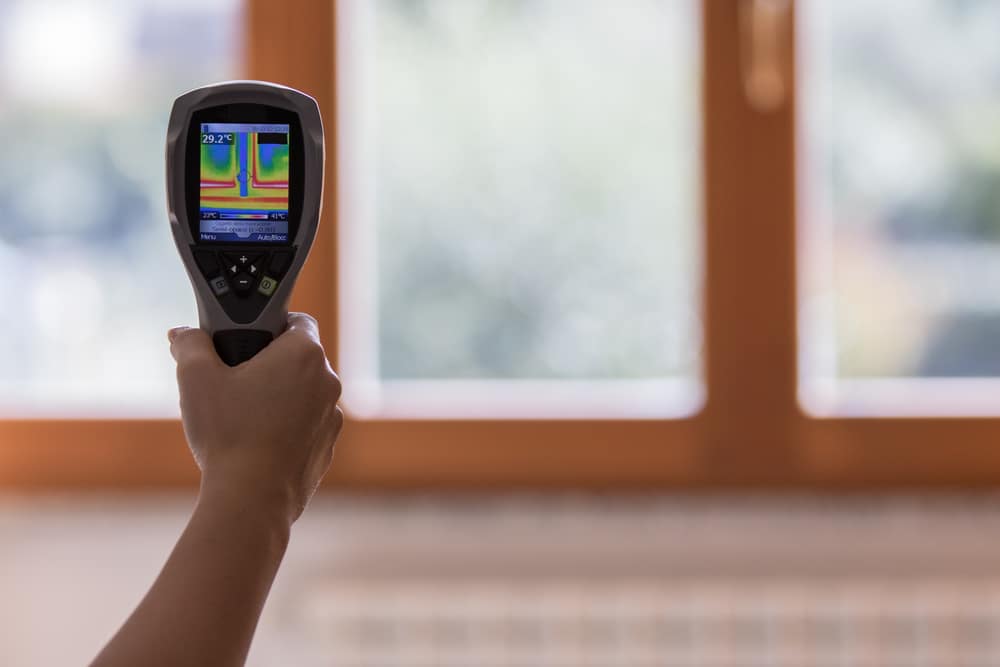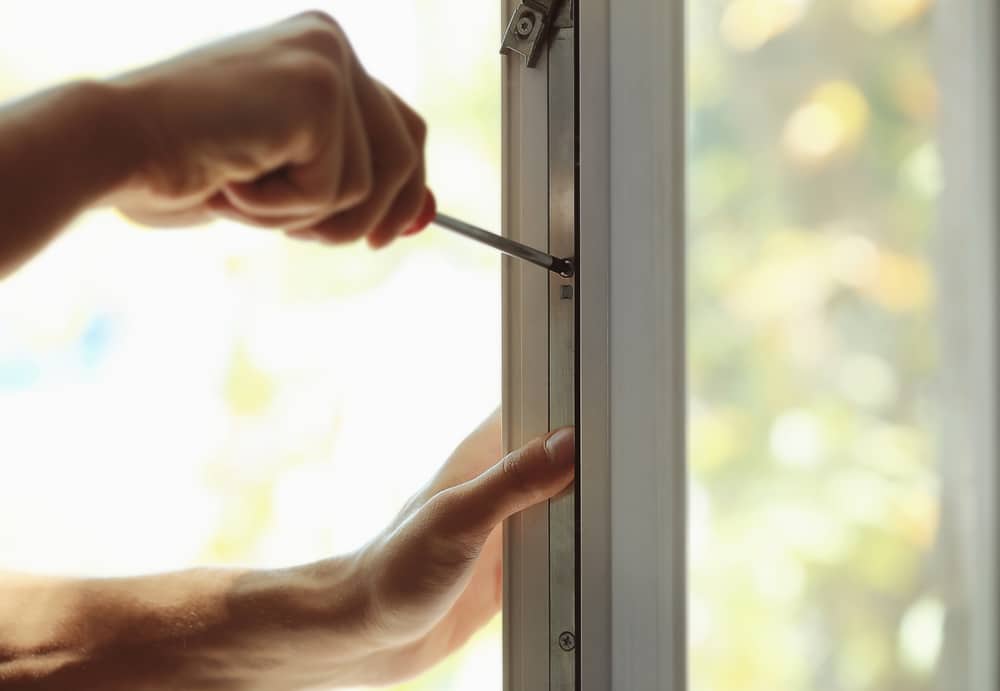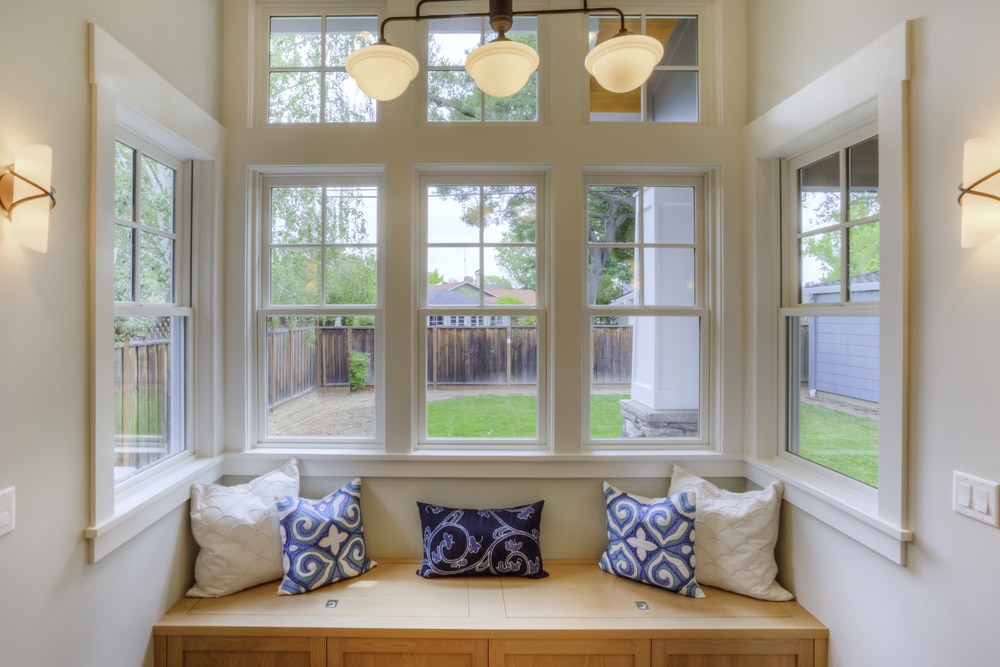Energy efficiency is a huge factor when it comes to choosing the windows for your home upgrade. That’s why it’s essential to decide on windows that have a low U-factor. But what does that mean?
Let’s discuss what a window U-factor is, why it’s so important, what benefits a low U-factor can provide you, and what you can do to improve your U-factor.
Table of Contents
What is a Window U-Factor?
A window u-factor is a metric that determines how much heat escapes your home through a glass window or door. It indicates how well a window prevents the loss of heat generated inside of your home, like through an HVAC unit. It’s one of the most important metrics used to gauge energy efficiency in your house.
What is a Good U-Factor for Windows?
When it comes to U-factors, you want yours to be low. The lower your U-factor is, the better your window is at preventing heat loss. The NRFC range is between .20-1.20. If you live in an area with cold weather, you will want a window that has a U-factor between .20 and .40 to retain the heat in your home.
The Difference Between U-Factor & R-Value
When you’re looking into metrics that deal with heat and insulation, you may come across the R-value metric as well. Though they seem similar, there are quite a few differences between the two.
R-Value:
- Measures how well different building materials resist the flow of heat
- Is commonly used to measure the insulating property of flooring and wall materials
- Works on a scale where the higher the number, the better the material’s thermal resistance
U-Factor:
- Only measures the rate of heat flow or loss of a glass window or door unit
- Works on a scale where the lower the number, the less heat loss occurs through the window

Why U-Factor is Important
Improved Energy Efficiency
In colder climates, windows with poor insulation will allow heat to escape, which results in your furnace having to run longer to maintain the desired temperature. When it’s warmer, the opposite happens. Poorly insulated windows will allow heat into the home, which means that it will be more difficult to cool your house.
This can affect your home’s energy usage immensely. With windows with a low U-factor, your house will be able to retain its desired temperature much more easily without any lost energy.
Lower Energy Costs
When your home is insulated properly with windows that have a low U-factor, it retains its heat better in the winter and lets in less heat in the summer. When your AC and furnace are not overworking to compensate for fluctuating heat, it’s more energy efficient and much cheaper when it comes to your energy bills.
Cost of Window
Windows with a low U-factor may bring down your energy costs, but their upfront cost is higher than windows that are less insulated. If you’re on a budget, you will want to find the right balance between the appropriate U-factor for your environment and the cost of the windows.
How to Improve Window U-Factor
Fiberglass Window Frames
Fiberglass is an extremely energy-efficient material that is not easily penetrated by heat or cold. Windows made of fiberglass will add extra insulation to your home due to how strong and durable they are.
Low-E Coating
Low-E coatings are transparent, very thin coatings that are slightly tinted. They’re added to the glazings of the window unit to help control the passage of solar radiation through the window’s glass. They work to reflect both shortwave and longwave infrared radiation.
Your home’s climate, geographical location, and construction will determine which type of low-E coating you will need. Solar control low-E reflects solar heat on exterior-facing panes, while passive low-E reflects heat back indoors on interior-facing panes.
Gas Fills
Gas fills are essential in creating an insulated glass unit that lowers the U-factor. They are included by the manufacturer filling the space between the glass panes with krypton, argon, or xenon gas. These noble gasses can help impede the transfer of heat through a window.
Warm Edge Spacers
Warm edge spacers insulate the edges of the window to keep the glass panes firmly apart from each other. They will expand and contract with the movement of the IGU to ensure that no gas escapes. This seal also protects against heat loss, air leakage, and condensation forming inside of the pains.

Upgrade Your Windows With NEXT Door & Windows
At NEXT Door & Window, we only provide high-quality windows that are long-lasting. Our selections include the durable Marvin and Infinity From Marvin collections. Windows from Infinity From Marvin are designed with Ultrex® fiberglass, which is 8x stronger than vinyl, and features Low-E coated glass that boosts energy efficiency by preventing heat transfer.
We are located throughout the Madison and Chicagoland areas and are well-known for our superior products, satisfying service, and always delivering the desired results. We provide all of our customers with our red carpet experience, which offers you your own project manager to keep you in the loop on the installation of your new windows.
At NEXT Door & Window, we provide:
- Exceptional Service
- Top-Quality Products
- Experienced Technicians
- Custom Factory Paint And Stain Before Installation
- An A+ BBB Rating
Boost your energy with our high-quality replacement windows today.
Comments are closed.



